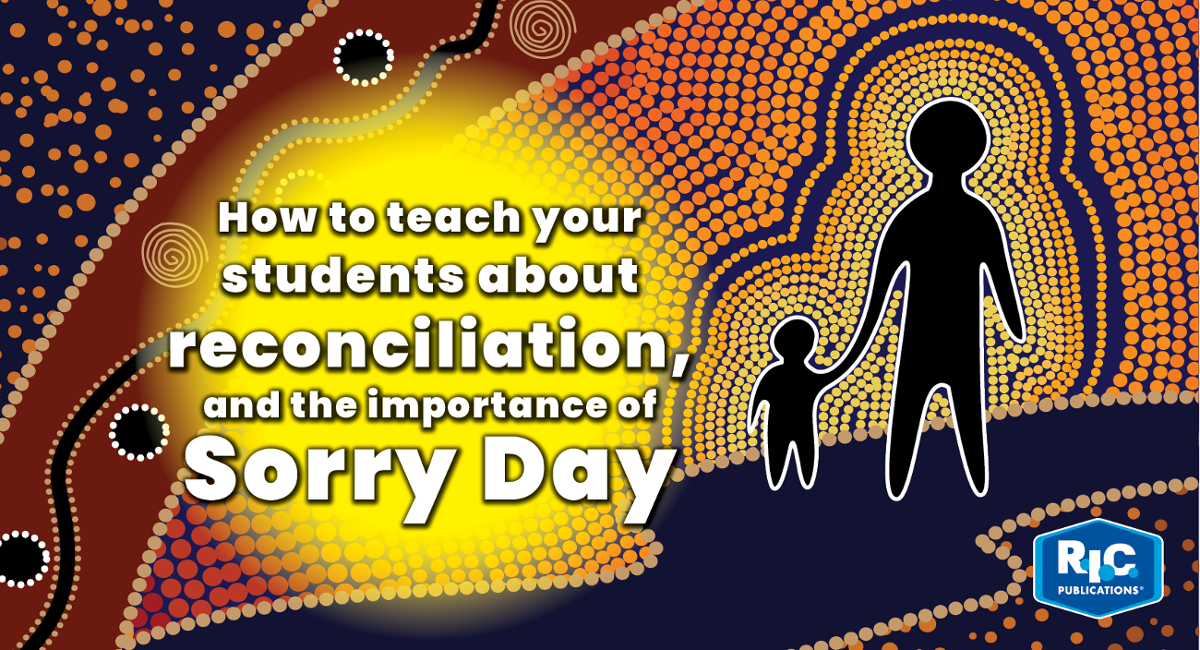- Wednesday 27 May 2020
- 0 Comments
The end of May is an important time in Australia in which we acknowledge the events of Australia’s history and strive to build a better future for everyone who lives in this beautiful country, especially the traditional custodians of the land—the Aboriginal and Torres Strait Islander peoples.
‘Reconciliation must live in the hearts, minds and actions of all Australians as we move forward, creating a nation strengthened by respectful relationships between the wider Australian community, and Aboriginal and Torres Strait Islander peoples’.
National Sorry Day, held on 26 May each year, is an important day during which we remember the past policies of forced child removal, and reflect on the sad and painful history of the Stolen Generations. On this day, we recognise moments of resilience, healing and the power of saying sorry.
During the following week, 27 May–3 June, people all over Australia celebrate National Reconciliation Week. To assist you in teaching students about these special days, we’ve included a range of activities that help bridge the cultural gap between Indigenous and non-Indigenous Australians by promoting empathy and respect for, and reconciliation with, the traditional custodians of Australia.
Welcome to and Acknowledgement of Country
- Read/Listen to the story Welcome To Country – Aunty Joy Murphy and Lisa Kennedy. Discuss the importance of Country to the Wurundjeri people as explained through the story. Explore the meaning of key vocabulary such as ancestors, Elders, spirits, community, courage, strength, integrity, values, creation, respect, nurtured and traditional lands.
- Ask a Traditional Owner, or an Aboriginal or Torres Strait Islander person who has been given permission from Traditional Owners, to welcome visitors to their country.
- Give an Acknowledgement of Country to show respect for Traditional Owners and the continuing connection of Aboriginal and Torres Strait Islander peoples to Country.
- For more information about Welcome to and Acknowledgement of Country, go to https://www.reconciliation.org.au/wp-content/uploads/2017/11/Welcome-to-and-Acknowledgement-of-Country.pdf.
Visiting sites of cultural significance
- Read the Guide to Aboriginal sites and places to understand the types of places that have cultural significance to Aboriginal and Torres Strait Islander peoples and why these places are important.
- Visit/Research places in your local community which have cultural significance to Aboriginal and Torres Strait Islander peoples, including rivers, caves, National Parks and other natural landforms. If required, ask local Aboriginal and Torres Strait Islander Elders about culturally-significant places in the community, the location and significance of each place, and why/how students can protect its cultural heritage.
- Watch online videos about places in Australia that have cultural significance to Aboriginal and Torres Strait Islander peoples, such as Wattie Creek (National film and sound archive of Australia) or Uluru Climbing Ban - Behind the News.
Yarning circles
- Establish a themed indoor/outdoor area that can be used to host Yarning circles. A campfire or natural bush setting with logs/rocks/seats/cushions for students to sit on during discussions is a great way to encourage shared connections to the land and nature.
- Provide time for students, teachers and community members to attend the Yarning circle to share similarities and differences, have discussions about the importance of reconciliation, and open the communication lines between Indigenous and non-Indigenous members of your school/local community.
- Click here to learn more about Yarning circles.
Reconciliation morning tea
- Explore some bush tucker recipes here (Note: This website may not open on Education department networks as it not secure, but it contains simple recipes that can be printed for use in classrooms) or here.
- Prepare and/or cook traditional foods eaten by Aboriginal and/or Torres Strait Islander peoples (e.g. bush tucker) to share at a morning tea. If possible, ask an Aboriginal and/or Torres Strait Islander Elder to come in and cook with students.
- Gather with family, friends, school and wider community members to enjoy a morning tea of traditional food eaten by Aboriginal and/or Torres Strait Islander peoples. Discuss the ingredients used to make each food item and how these were sourced, collected and prepared for cooking purposes. Compare similarities and differences between these foods and the foods we consume today.
Stories of culture
- Invite an Aboriginal and/or Torres Strait Islander Elder to come in and share stories of their culture with students, including Aboriginal Dreamtime stories. Encourage guest speakers to explain how these stories were used to guide how they lived/behaved.
- View animated videos of Aboriginal Dreamtime stories, such as:
Mirram the Kangaroo and Warreen the Wombat https://www.youtube.com/watch?v=xDJrnldb08o
Tiddalick the Frog https://www.youtube.com/watch?v=0y3Ta5xcKV4
The rainbow serpent https://www.youtube.com/watch?v=pCuuRRrfOXo
Biladurang the platypus https://www.youtube.com/watch?v=lDl5QwAR8DI
How the Kangaroo got its pouch https://www.youtube.com/watch?v=8sWFAGGWvUA
Girawu the Goanna https://www.youtube.com/watch?v=tWvoTZxvEs8
Wayambeh the Turtle https://www.youtube.com/watch?v=DpzDvpZ0hMg
- Read popular Dreamtime stories such as Eaglehawk and Crow, Emu and the Jabiru, How the water got to the plains, Illawarra and the five islands and Red Waratah at https://dreamtime.net.au/dreaming/story-list/ or using print versions of Aboriginal Dreamtime stories.
Other activities
- Raise awareness of and/or participate in community events during National Reconciliation Week.
- Create a whole-class or whole-school reconciliation mural entitled ‘Grounded in Truth—Walk together with courage’ to highlight the importance of Aboriginal and Torres Strait Islander histories and cultures. Murals may be made using different materials and techniques such as painting clay tiles, fabric or wood and constructed as one whole image that all students work on or as a compilation of individual students' images.
- Allow time for students to engage with traditional games played by Aboriginal and Torres Strait Islander peoples during outdoor play time. Go to https://sport.nsw.gov.au/clubs/training/tig to see a list of games that can be played, then click each game to learn how to play. Or download this free activity sheet by clicking on the image below or this link: blog/post/indigenous-art-activities/.

